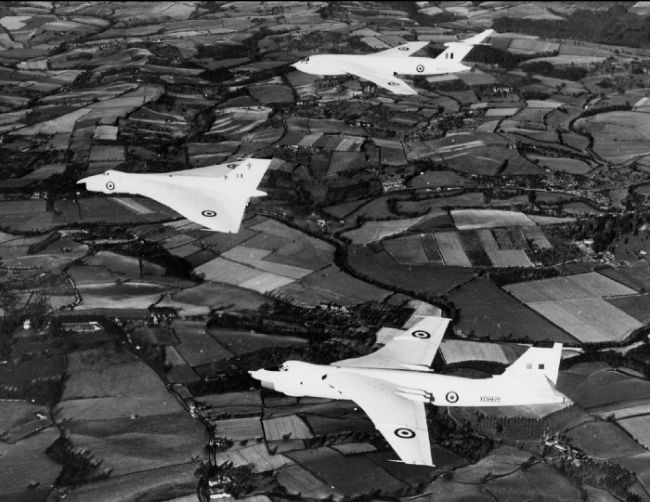
28 August 1945 – The Start of the Vulcan Story by Dr. Robert Pleming
The July 1945 General Election saw a Labour Government come to power in a landslide victory under Prime Minister Clement Attlee. The use of two
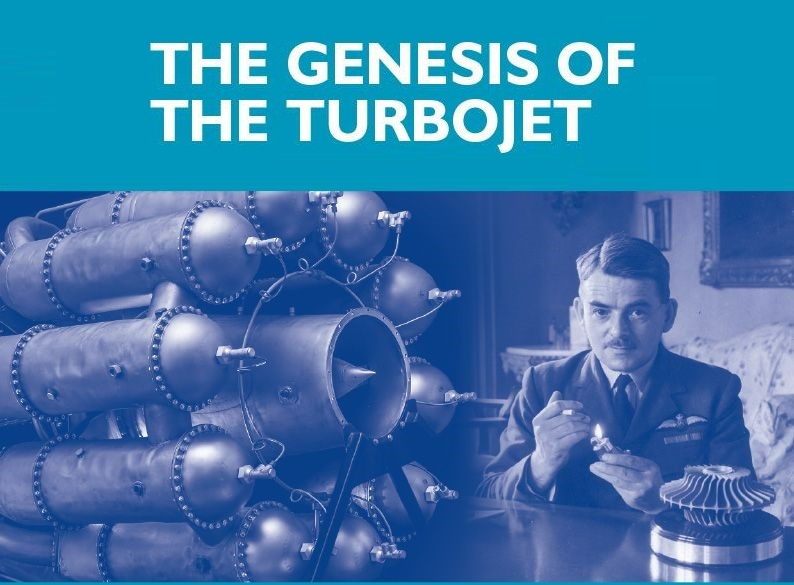
Rolls-Royce and others become involved…
In January 1940, Whittle had met Dr. Stanley Hooker of Rolls-Royce, who in turn introduced Whittle to Rolls-Royce board member and manager of their Derby factory, Ernest Hives (later Lord Hives). Hooker was in charge of the supercharger division at Rolls-Royce Derby and was a specialist in the mathematics of “fluid flow”. He had already increased the power of the Merlin piston engine by a staggering 30% by improving its supercharger. Such a speciality was naturally suited to the aero-thermodynamics of jet engines in which the optimisation of airflow in the compressor, combustion chambers, turbine and jet pipe, is fundamental.
Hives agreed to supply key parts to help the project. Also, Rolls-Royce built a compressor test rig which helped Whittle solve the surging problems (unstable airflow in the compressor) on the W.2 engine. In early 1942 Whittle contracted Rolls-Royce for six engines, known as the WR.1, identical to the existing W.1.
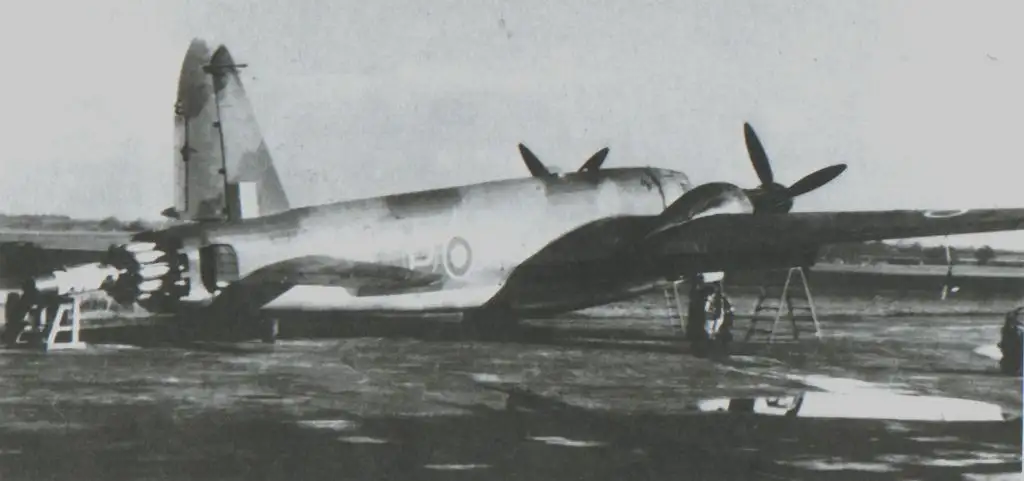
When Rolls-Royce became involved, Ray Dorey, the manager of the company’s Flight Centre at Hucknall airfield on the north side of Nottingham, had a Whittle engine installed in the rear of a Vickers Wellington bomber. The installation was done by Vickers at Weybridge. A flying test-bed enables testing to be done in flight without the aircraft depending on an untried engine for its own propulsion and safety.
The problems between Rover and Power Jets became a “public secret” and late in 1942 Spencer Wilks of Rover met with Hives and Hooker at the “Swan and Royal” pub, in Clitheroe, near the Barnoldswick factory. By arrangement with the Ministry of Aircraft Production, they traded the jet factory at Barnoldswick for Rolls-Royce’s tank engine factory in Nottingham, sealing the deal with a handshake. The official handover took place on 1 January 1943, although the W.2B contract had already been signed over in December. Rolls-Royce closed Rover’s secret parallel plant at Clitheroe soon after: however, they continued the development of the W.2B/26 that had begun there.
Testing and production ramp-up was immediately accelerated. In December 1942 Rover had tested the W.2B for a total of 37 hours, but within the next month, Rolls-Royce tested it for 390 hours. The W.2B passed its first 100-hour test at full performance of 1,600 lbf (7.1 kN) on 7 May 1943.
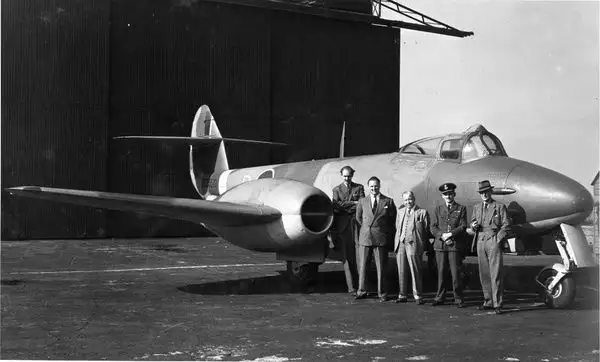
The prototype Meteor airframe was already complete and the first Whittle-engined aircraft, DG205/G, took to the air on 12 June 1943. Production versions of the engine started rolling off the line in October, first known as the W.2B/23, then the RB.23 (for “Rolls-Barnoldswick”) and eventually became known as the Rolls-Royce Welland. Barnoldswick was too small for full-scale production and turned back into a pure research facility under Hooker’s direction, while a new factory was set up in Newcastle-under-Lyme. Rover’s W.2B/26, as the Rolls-Royce Derwent, opened the new line and soon replaced the Welland, allowing the production lines at Barnoldswick to shut down in late 1944.
Despite lengthy delays in their own programme, the Luftwaffe beat the British efforts into the air by nine months. A lack of cobalt for high-temperature steel alloys meant the German designs were always at risk of overheating and damaging their turbines. The low-grade alloy production versions of the Junkers Jumo 004, designed by Dr. Anselm Franz and which powered the Messerschmitt Me 262 would typically last only 10–25 hours (longer with an experienced pilot) before burning out. If it was accelerated too quickly, the compressor would stall and power was immediately lost and sometimes it exploded on their first start-up. Over 200 German pilots were killed during training. Nevertheless, the Me 262 could fly far faster than allied planes and had very effective firepower. Although Me 262s were introduced late in the war they shot down 542 or more allied planes and in one allied bombing raid, downed 32 of the 36 Boeing B-17 Flying Fortresses.
Whittle’s designs were more basic, with centrifugal compressors rather than the more complicated axial designs. The latter, having several stages of rotating blades, each stage increasing the pressure, were potentially more efficient but were much more difficult to develop. The UK designs also had better materials such as the Nimonic alloys for turbine blades. Early UK jet engines would run for 150 hours between overhauls and had better power-to-weight ratio and specific fuel consumption compared with the German designs.
By the end of the Second World War, other UK engine companies were working on jet designs based on the Whittle pattern, such as the de Havilland Goblin and Ghost engines. However, the advantages of axial-flow compressors with their higher pressure ratios compared with simpler centrifugal designs led to a transition to axial compressors in the late 1940s, epitomised by the Rolls-Royce Avon series, Armstrong Siddeley Sapphire, Bristol Olympus, and others.
With the W.2 design proceeding smoothly, Whittle was sent to Boston, Massachusetts in mid-1942 to help the General Electric jet programme. GE, the primary supplier of turbochargers in the U.S., was well suited to starting jet production quickly. A combination of the W.2B design and a simple airframe from Bell Aircraft flew in autumn of 1942 as the Bell XP-59A Airacomet, six months before the flight of the British Meteor.
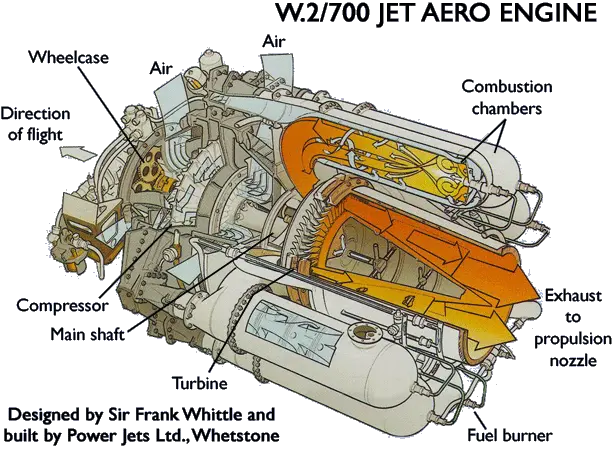
Whittle’s developments at Power Jets continued, the W.2/700 later being fitted with an afterburner (“reheat” in British terminology), as well as experimental water injection to cool the engine and allow higher power settings without melting the turbine. Whittle also turned his attention to the axial-flow (straight-through) engine type as championed by Griffith, designing the L.R.1. Other developments included the use of fans to provide greater mass-flow, either at the front of the engine as in a modern turbofan or at the rear, which is much less common but somewhat simpler.
Whittle’s work had caused a minor revolution within the British engine manufacturing industry, and even before the E.28/39 flew most companies had set up their own research efforts. In 1939, Metropolitan-Vickers set up a project to develop an axial-flow design as a turboprop but later re-engineered the design as a pure jet known as the Metrovick F.2. Rolls-Royce had already copied the W.1 to produce the low-rated WR.1 but later stopped work on this project after taking over Rover’s efforts. In 1941, de Havilland started a jet fighter project, the Spider Crab — later called Vampire — along with their own engine to power it; Frank Halford’s Goblin (Halford H.1).
Armstrong Siddeley also developed a more complex axial-flow design with an engineer called Heppner, the ASX but reversed Vickers’ thinking and later modified it into a turboprop instead, the Python. The Bristol Aeroplane Company proposed to combine jet and piston engines but dropped the idea and concentrated on propeller turbines instead.
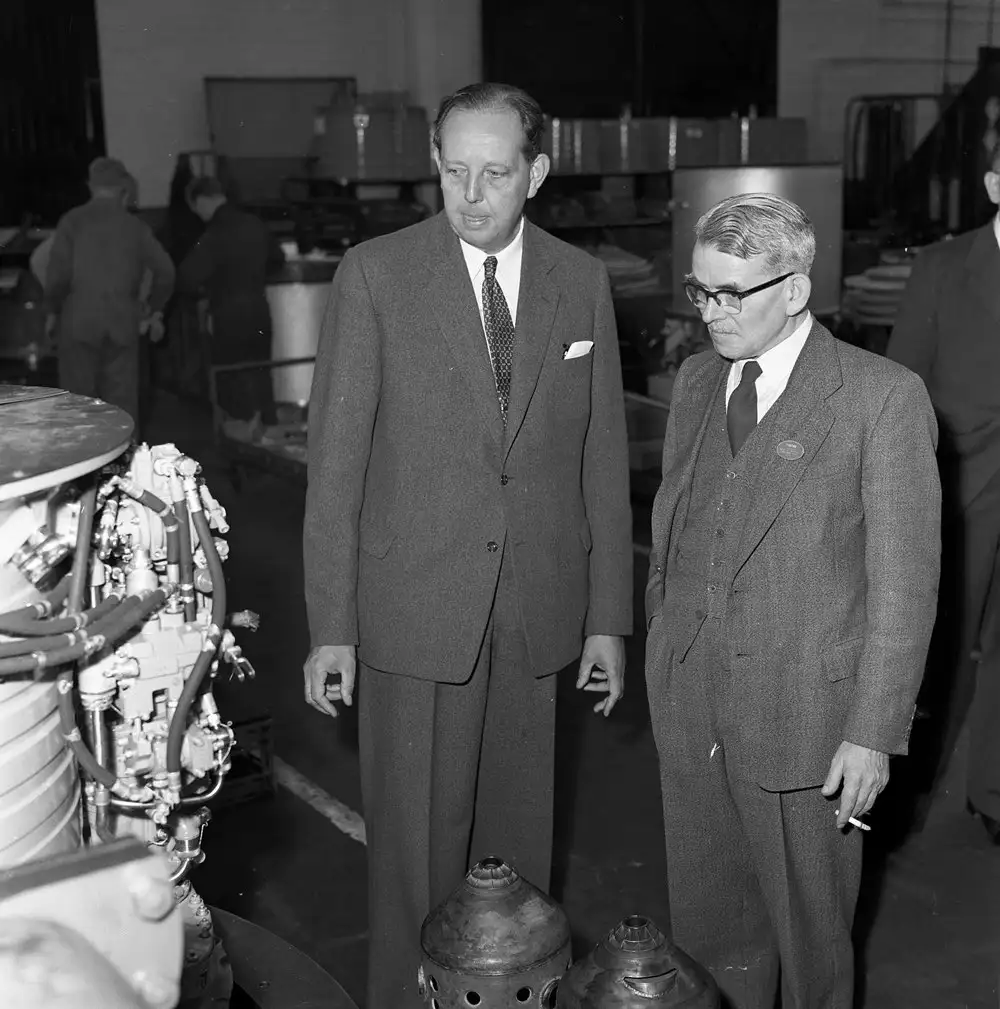
Did you know? After being introduced to the brilliant engineer, Frank Whittle, Dr. Stanley Hooker’s talent soon saw him become chief engineer responsible for developing, and putting into production, the Welland and Derwent jet engines used in the Gloster Meteor. Hooker went on to be appointed as Chief Engineer of Bristol Aero Engines in 1950, where he worked on finishing the Rolls-Royce Olympus engine. He was involved in developing later versions that were used on the Avro Vulcan.
Hooker was involved with development work on engines which powered icons of British aircraft such as the Vulcan, Concorde, TSR2 and the VTOL (Vertical Take Off and Landing) Harrier.
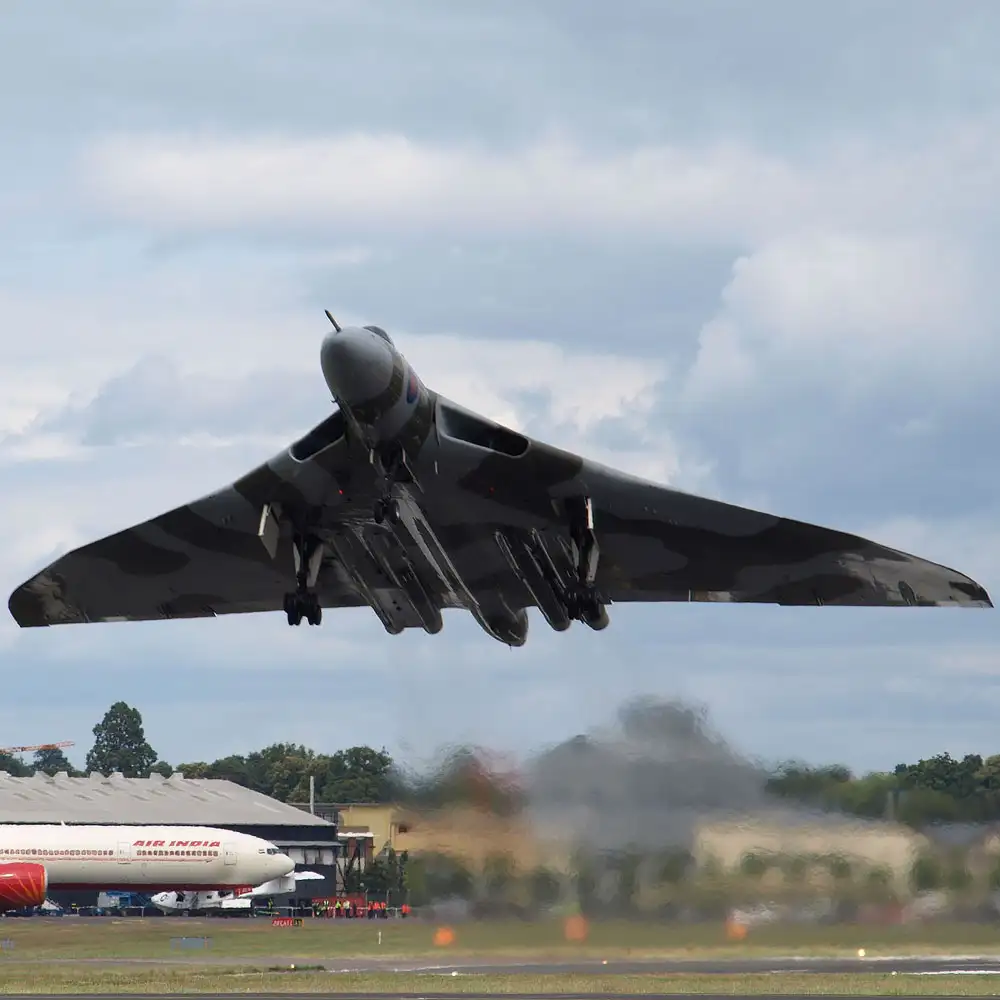
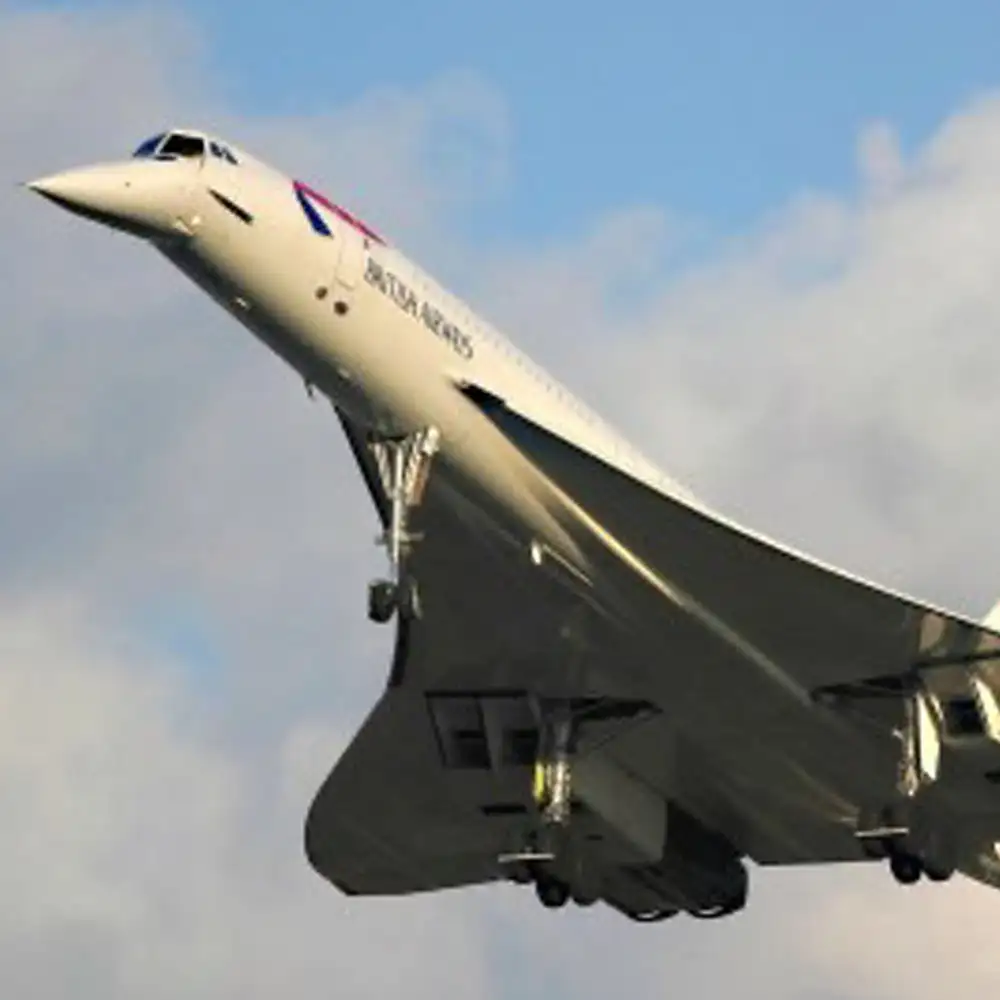
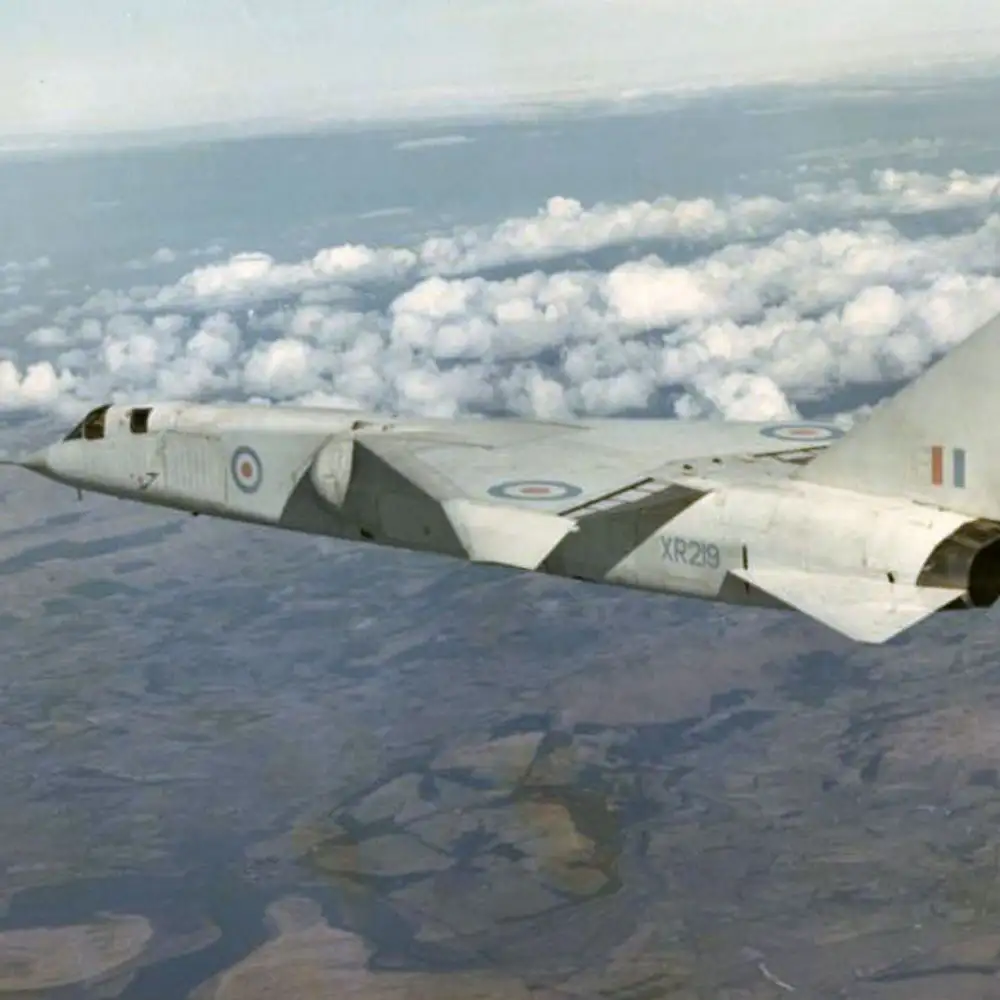
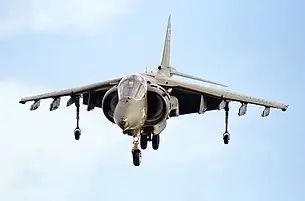
Nationalisation of Power Jets
During a demonstration of the E.28/39 to Winston Churchill in April 1943, Whittle proposed to Stafford Cripps, Minister of Aircraft Production, that all jet development be nationalised. He pointed out that the company had been funded by private investors who helped develop the engine successfully, only to see production contracts go to other companies. Nationalisation was the only way to repay those debts and ensure a fair deal for everyone, and he was willing to surrender his shares in Power Jets to make this happen. In October, Cripps told Whittle that he decided a better solution would be to nationalise Power Jets only. Whittle believed that he had triggered this decision, but Cripps had already been considering how best to maintain a successful jet programme and act responsibly regarding the state’s substantial financial investment, while at the same time wanting to establish a research centre that could utilise Power Jets’ talents, and had come to the conclusion that national interests demanded the setting up of a Government-owned establishment. On 1 December, Cripps advised Power Jets’ directors that the Treasury would not pay more than £100,000 for the company.
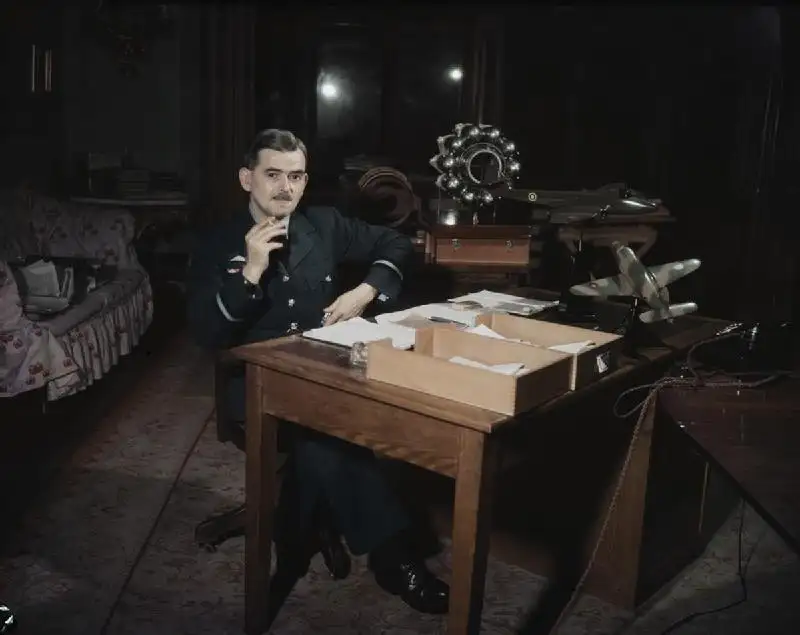
In January 1944, Whittle was appointed a CBE in the New Year Honours. By this time, he was a Group Captain, having been promoted from Wing Commander in July 1943. Later that month after further negotiations, the Ministry made another offer of £135,500 for Power Jets, which was reluctantly accepted after the Ministry refused arbitration on the matter. Since Whittle had already offered to surrender his shares he would receive nothing at all, while Williams and Tinling each received almost £46,800 for their stock, and investors of cash or services had a threefold return on their original investment. Whittle met with Cripps to object personally to the nationalisation efforts and how they were being handled, but to no avail. The final terms were agreed on 28 March, and Power Jets officially became Power Jets (Research and Development) Ltd, with Roxbee Cox as Chairman, Constant of RAE Head of Engineering Division, and Whittle as Chief Technical Advisor. On 5 April 1944, the Ministry sent Whittle an award of only £10,000 for his shares.
From the end of March, Whittle spent six months in a hospital recovering from nervous exhaustion and resigned from Power Jets (R and D) Ltd in January 1946. In July the company was merged with the gas turbine division of the RAE to form the National Gas Turbine Establishment (NGTE) at Farnborough, and 16 Power Jets engineers, following Whittle’s example, also resigned.
Whittle went on to receive a knighthood and a reward for his invention. Although the reward was worth nearly £3m in today’s money he was clearly very under rewarded for what he gave to the world.
Throughout the UK, particularly in Coventry, Lutterworth and Rugby, there are buildings and roads named after Sir Frank Whittle and statues erected in his honour.
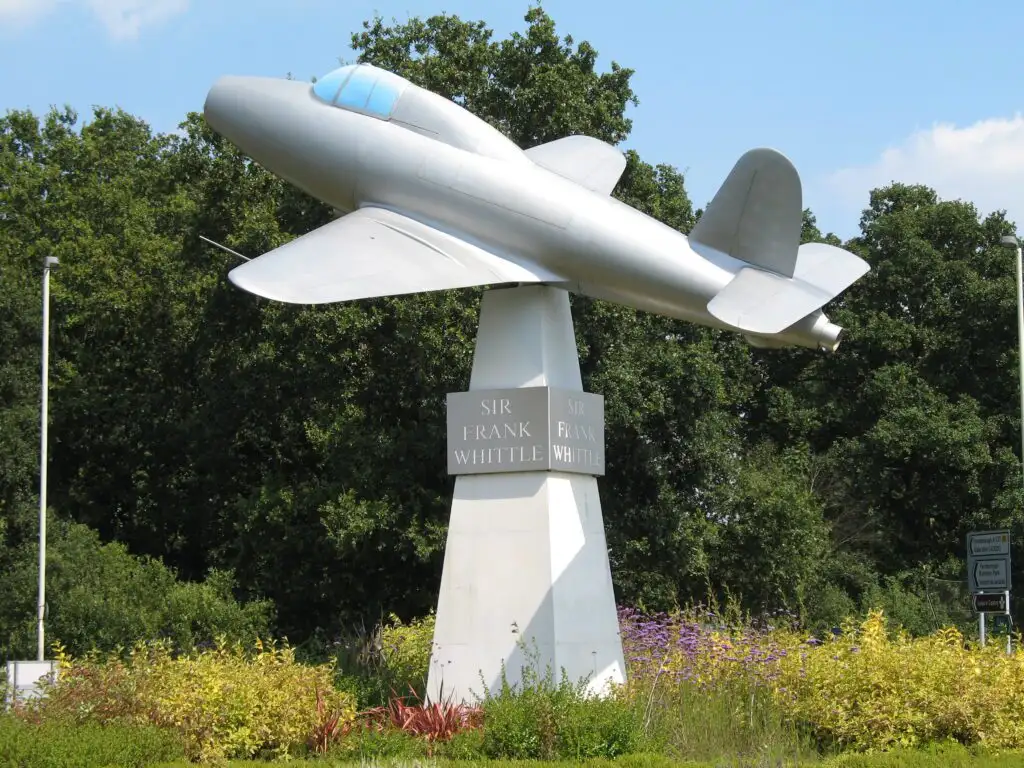

The July 1945 General Election saw a Labour Government come to power in a landslide victory under Prime Minister Clement Attlee. The use of two
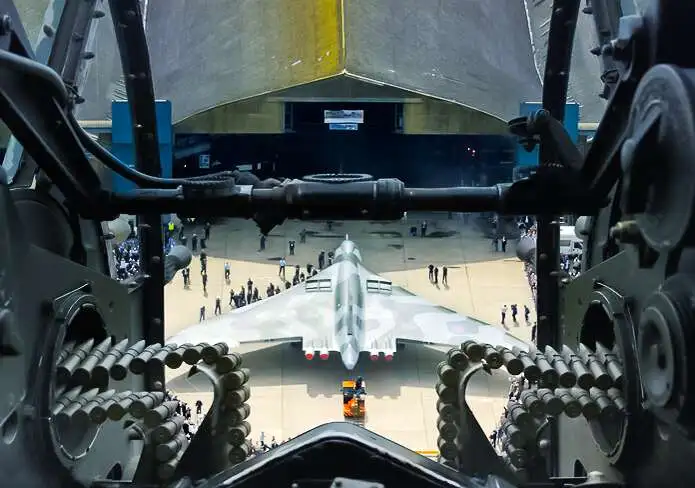
A fresh appeal was launched in March 2004 to reach the Trust’s commitment of 29% of the funding total, required before the HLF would issue
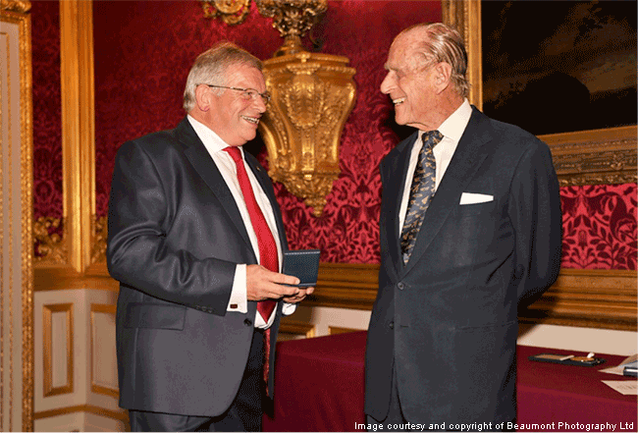
There are many links with the Royal Family and the Avro Vulcan. Prince Philip, the Duke of Edinburgh, was honorary Patron of The Air League
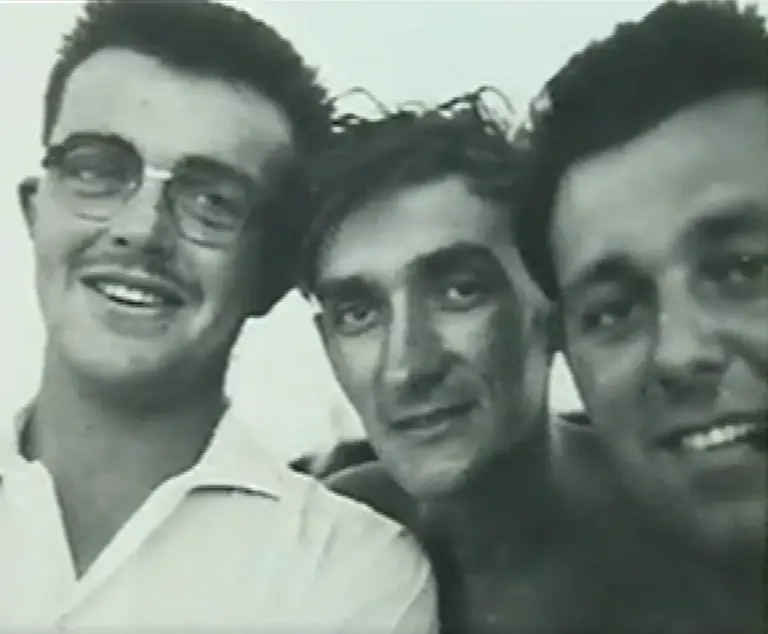
A veteran who was stationed on Christmas Island, in the Pacific, during Britain’s largest ever nuclear weapons test shares his love of Vulcan XH558 and